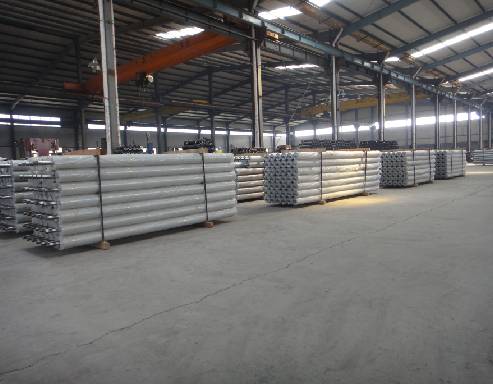 Afrikaans
Afrikaans  Albanian
Albanian  Amharic
Amharic  Arabic
Arabic  Armenian
Armenian  Azerbaijani
Azerbaijani  Basque
Basque  Belarusian
Belarusian  Bengali
Bengali  Bosnian
Bosnian  Bulgarian
Bulgarian  Catalan
Catalan  Cebuano
Cebuano  Corsican
Corsican  Croatian
Croatian  Czech
Czech  Danish
Danish  Dutch
Dutch  English
English  Esperanto
Esperanto  Estonian
Estonian  Finnish
Finnish  French
French  Frisian
Frisian  Galician
Galician  Georgian
Georgian  German
German  Greek
Greek  Gujarati
Gujarati  Haitian Creole
Haitian Creole  hausa
hausa  hawaiian
hawaiian  Hebrew
Hebrew  Hindi
Hindi  Miao
Miao  Hungarian
Hungarian  Icelandic
Icelandic  igbo
igbo  Indonesian
Indonesian  irish
irish  Italian
Italian  Japanese
Japanese  Javanese
Javanese  Kannada
Kannada  kazakh
kazakh  Khmer
Khmer  Rwandese
Rwandese  Korean
Korean  Kurdish
Kurdish  Kyrgyz
Kyrgyz  Lao
Lao  Latin
Latin  Latvian
Latvian  Lithuanian
Lithuanian  Luxembourgish
Luxembourgish  Macedonian
Macedonian  Malgashi
Malgashi  Malay
Malay  Malayalam
Malayalam  Maltese
Maltese  Maori
Maori  Marathi
Marathi  Mongolian
Mongolian  Myanmar
Myanmar  Nepali
Nepali  Norwegian
Norwegian  Norwegian
Norwegian  Occitan
Occitan  Pashto
Pashto  Persian
Persian  Polish
Polish  Portuguese
Portuguese  Punjabi
Punjabi  Romanian
Romanian  Russian
Russian  Samoan
Samoan  Scottish Gaelic
Scottish Gaelic  Serbian
Serbian  Sesotho
Sesotho  Shona
Shona  Sindhi
Sindhi  Sinhala
Sinhala  Slovak
Slovak  Slovenian
Slovenian  Somali
Somali  Spanish
Spanish  Sundanese
Sundanese  Swahili
Swahili  Swedish
Swedish  Tagalog
Tagalog  Tajik
Tajik  Tamil
Tamil  Tatar
Tatar  Telugu
Telugu  Thai
Thai  Turkish
Turkish  Turkmen
Turkmen  Ukrainian
Ukrainian  Urdu
Urdu  Uighur
Uighur  Uzbek
Uzbek  Vietnamese
Vietnamese  Welsh
Welsh  Bantu
Bantu  Yiddish
Yiddish  Yoruba
Yoruba  Zulu
Zulu Ceramic Lagging Conveyor Pulley - Enhance Durability and Performance
Ceramic Lagging Conveyor Pulleys Enhancing Performance and Durability
In the realm of industrial material handling, conveyor systems play a critical role in the efficiency and productivity of operations. Among the various components of these systems, pulleys are essential for controlling the movement of belts and materials. One innovative advancement in this area is the use of ceramic lagging on conveyor pulleys, which significantly enhances their performance and longevity.
Ceramic Lagging Conveyor Pulleys Enhancing Performance and Durability
One of the primary benefits of ceramic lagging is its exceptional grip on the conveyor belt. The textured surface of the ceramic tiles increases frictional contact, reducing slippage and improving the efficiency of the material transfer process. This enhanced grip is particularly beneficial in applications involving steep inclines or heavy loads, where traditional lagging might fail to provide adequate traction.
ceramic lagging conveyor pulley

Moreover, ceramic lagging is highly resistant to abrasion and impact damage. In industries such as mining, quarrying, and bulk material handling, where the conveyed materials can be abrasive or heavy, the durability of the conveyor system is paramount. The resilience of ceramic lagging helps minimize downtime caused by maintenance and replacement, leading to increased productivity and cost savings over time.
Additionally, ceramic lagged pulleys excel in harsh environmental conditions. They resist heat, moisture, and chemicals, making them suitable for a wide range of applications. This versatility allows businesses to use ceramic lagging in diverse settings, from outdoor quarries to indoor manufacturing facilities.
Another significant advantage is the ease of installation and maintenance. Ceramic lagging can be applied to both new and existing pulleys with relative ease, allowing businesses to upgrade their systems without complete overhauls. Maintenance requirements are lower compared to traditional lagging materials, which can contribute to reduced operational costs.
In conclusion, ceramic lagging conveyor pulleys present a compelling option for industries seeking to improve the performance and lifespan of their conveyor systems. With enhanced grip, superior wear resistance, and adaptability to harsh conditions, ceramic lagging represents a key innovation that can lead to increased efficiency and reduced maintenance costs. As industries aim for greater productivity and sustainability, the adoption of ceramic lagging technology is likely to continue its upward trend.
-
Wing Pulley Conveyor for Conveyor Belt MaintenanceNewsJun.16,2025
-
Self Cleaning Spiral Idler for Conveyor DesignNewsJun.16,2025
-
Pulley Lagging for Conveyor Belt AlignmentNewsJun.16,2025
-
Impact Idlers Used in Belt Conveyor for PerformanceNewsJun.16,2025
-
Ceramic Lagging Conveyor Pulley for Conveyor Belt SystemsNewsJun.16,2025
-
Belt Conveyor Idler for Heavy-Duty ApplicationsNewsJun.16,2025





























